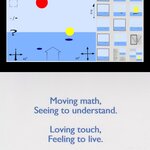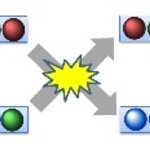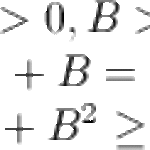Physics

My 20+ year tradition of a physics inspired holiday card continues. My friends like them, even if they are not understood :-)
Accompanying text:
Hello, hello:
The card features a mockup of software I am writing to animate math in time and space for phones and the web. Visuals physics is a mission to provide images of any equation in physics. Equations in classical physics are part of the fun in video games like Angry Birds. Quantum mechanics is hostile to representations for the eyes. Quantum field theory - quantum mechanics on speed - is unreachable for all but the most…

Quantum entanglement is a central principle of quantum physics - the science of sub-atomic particles. Multiple particles, such as photons, are connected with each other even when they are very far apart and what happens to one particle can have an effect on the other one at the same moment, even though these effects cannot be used to send information faster than light.
In 1935, Albert Einstein, Boris Podolsky, and Nathan Rosen, referred to in the shorthand form EPR today, published a thought experiment designed to show that quantum mechanics, by itself, is not sufficient to describe reality…

So, is it or is it not possible? Can black holes be split?
In my last blog I demonstrated that the laws of thermodynamics forbid the splitting of a single black hole. However, I also demonstrated the same laws don't forbid the splitting of a pair of black holes into many.
This leaves the door wide open for splitting black holes by smashing them together.
Or does it?
I got some good reactions to my 'splitting black holes' blog post. I am happy to see that most of the Hammock Physicist readers who reacted consider such a process, although thermodynamically not forbidden, still to be deeply…

I hereby announce (create) a truly "next level" and I am sure inspiring challenge to all serious scientific philosophical thinkers who from their heart desire to participate in an honest, advanced attack on the fundamental questions that is not just another cycle of inflated sophistication or self-marketing. Do you have some sort of understanding of our postmodern condition at the fundamental cutting edge of science and philosophy and the difficulties that emerged through it yet refuse to give up on participating in a somehow trustworthy social construction of higher level insight?…

UPDATE: for more on this, I only now realize that my friend at Resonaances had written about it yesterday... It is nice to see that he agrees with my conclusions, anyway. Also Peter has news on it, and as usual additional links...
---
My ATLAS colleagues will have to pardon me for the slightly sensationalistic title of this article, but indeed the question is one which many inside and outside CERN are asking themselves upon looking into the new public material of ATLAS Higgs boson searches using the 2011 dataset in conjunction with the first part of 2012 data.
My two pence: relax. This is…

The Linac Coherent Light Source (LCLS) at the SLAC National Accelerator Laboratory is using X-rays to measure, in atomic detail, a key process at work in extreme plasmas like those found in stars, the rims of black holes and other massive cosmic phenomena.
In doing so, they may help determine why observations from orbiting X-ray telescopes don't match theoretical predictions - the ultrafast X-ray laser pulses of LCLS allows scientists to create and measure atomic processes in extreme plasmas in a fully controlled way and a 28-person team dissected a process in multi-million-degree space…

This is a post about basics. That's because I think a point needs to be made which is surprisingly not as well-known as its elementary nature would have you guess.
Correlation -in its most used version, due to Pearson- is a measure of how two quantities can be observed to be in linear dependence on one another. It is a very common quantity to report the results of scientific studies, particularly but not exclusively in the social sciences. Researchers try to evidence the presence of a correlation between two phenomena as a preliminary step to investigating whether one can be the cause of the…

The news of the prizes to theorists and experimentalists are going to receive million-dollar prizes ($3M and $1M, details everywhere else -but see Peter's blog for insightful comment and discussion) are shaking the CERN experiments. While arguable (as in any case of a prize) whether they deserve the prizes for their work, nobody really ventures to discuss what they should or shouldn't do with the money. In the case of ATLAS and CMS spokespersons and past spokespersons, however, opinions vary widely.
While the current spokespersons Gianotti and Incandela have already declared that they are…

In High-Energy Physics the small p-value of an observation may be the first hint of a discovery about to be made. Here by p-value I just mean the probability, just to be fancy (or brief). Because we rely on the assessment of the rarity of observations to decide whether we have discovered something or not, we physicists are (or should be) really careful with p-values. Today's article aims at demonstrating how easy it is to be carried away into giving more relevance to an observation than we should.
The problem is that often, upon observing a odd phenomenon, we are usually unable to correctly…

Ask a physicist how to split a black hole, and you will receive the reply "That's impossible". Ask for further clarification, and you will get a lecture on black hole thermodynamics.
The argument against the splitting of a black hole is elegant in its simplicity. It is based on a geometrical interpretation of black hole thermodynamic properties such as black hole energy and black hole entropy. The reasoning is most straightforward for Schwarzschild black holes. From perspective of a stationary external observer these are nothing more than spherically-shaped glowing gravitational horizons.…